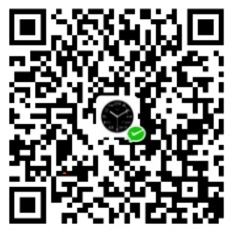perl使用标量来称呼单个事物,标量是perl中最简单的一种数据类型,标量大部分要么是数字要么是由字符组成的序列
数字
所有的数字内部格式相同,在perl内部总是按照双精度浮点数的要求保存数字并进行运算的,也即是perl内部不含整数值,程序中用到的整数常量会被转换成等效的浮点数值
浮点数直接量:小数点与前置的正负号都是可选的,数字后面可以加上’e’或’E’表示10的幂
perl 允许你在整数直接量中插入下划线,将若干位数分开,例如:123_456_789
八进制数以0开头,十六进制数以0x开头,二进制数以0b开头
接着写一个小程序实践一下:
#! /usr/bin/perl printf "%f\n", -1.25; printf "%f\n", 1.25e20; printf "%f\n", 1.25e8; printf "%f\n", -1.25e-3; printf "%f\n", -1.25E2; printf "%d\n", 123_322_341_6778; printf "------------------\n"; printf "%d\n", 0377; printf "%d\n", 0xff; printf "%d\n", 0b11111111; printf "------------------\n"; printf "%d\n", 10.2%3.1; printf "%f\n", 10.2%3.1; printf "%d\n", 10%3; printf "%d\n", 3**2;
编译运行:
wu@ubuntu:~/perl$ chmod a+x num.pl
wu@ubuntu:~/perl$ ./num.pl
-1.250000
125000000000000000000.000000
-125000000.000000
-0.001250
-125.000000
1233223416778
——————
255
255
255
——————
1
1.000000
1
9
字符串操作
字符串可以使用. 操作符连起来组成一个新的字符串,原来的字符串不变
字符串重复操作符:str x n,将x左边的字符串str重复指定n次
先来一个程序验证一下
#! /usr/bin/perl $s1 = "hello "; $s2 = "wuyudong\n"; $s3 = $s1.$s2; print $s1; print $s2; print $s3; printf "%s\n", 5x4;
运行
wu@ubuntu:~/perl$ ./string.pl
hello wuyudong
hello wuyudong
5555
数字与字符串之间的自动转换
perl会根据需要自动在数字与字符串之间转换,主要取决于中间的操作符,你不必担心数字和字符串之间的差异,只管合理使用操作符,perl来搞定剩下的工作
来个例子:
#! /usr/bin/perl printf "%d\n", 0377; print "0377\n"; printf "%s\n","z".5*7x4;
运行
wu@ubuntu:~/perl$ ./num1.pl
255
0377
z35353535
标量变量
变量以$打头,大小写敏感;如果启用utf8你、编译指令,就可以使用非ASCII字符来作为变量名
字符串中的标量变量内插
将字符串内出现的所有标量变量替换成当前的值,如果标量没有被赋值过,就会用空字符串来替换
当进行内插时,perl会尽可能使用最长且合法的变量名称,有可能会引起歧义,举个例子:
#! /usr/bin/perl
print "the answer is ",2*4,".\n";
$s1 = "wu ";
$s2 = "yudong";
print "my name is $s1$s2\n";
print "my name is ".$s1.$s2."\n";
print "------------------------\n";
$what = "brontosaurus steak";
$n = 3;
print "fred ate $n $whats.\n"; #这里替换的是$whats,未定义,为null
print "fred ate $n ${what}s.\n"; #比较常用的方法,使用{}
print "fred ate $n $what"."s.\n"; #另一种方法,比较麻烦
print 'fred ate ' . $n .' '. $what."s.\n"; #最麻烦的写法
编译运行
wu@ubuntu:~/perl$ ./string.pl
the answer is 8.
my name is wu yudong
my name is wu yudong
————————
fred ate 3 .
fred ate 3 brontosaurus steaks.
fred ate 3 brontosaurus steaks.
fred ate 3 brontosaurus steaks.
数值与字符串比较操作符:
| 比较 | 相等 | 不等 | 小于 | 大于 | 小于或等于 | 大于或等于 |
| 数字 | == | != | < | > | <= | >= |
| 字符串 | eq | ne | lt | gt | le | ge |
获取用户输入
让perl程序读入输入的值,使用“行输入”操作符<STDIN>,放在程序希望的位置上
#! /usr/bin/perl
print "what's your name?\n";
$name = <STDIN>;
if($name eq "\n") {
printf "this is just a blank line!\n";
} else {
printf "your name is: $name!";
}
编译运行
wu@ubuntu:~/perl$ ./string.pl
what’s your name?
wuyudong
your name is: wuyudong
chomp操作符
chomp的作用很单一,就是将单个字符变量的末尾的换行符去掉
undef值
当变量首次赋值前的初始值是undef值(未定义)
当数字用的时候是0,当字符串用的时候是空字符串,但undef既不是数字也不是字符串,而是另一种类型的标量值。举个例子:
#! /usr/bin/perl
$n = 1;
while($n < 100) {
$sum += $n; #sum未定义
$n++;
}
print "the total is $sum.\n";
$string .= "more text\n"; #string未定义
print $string;
编译运行
wu@ubuntu:~/perl$ ./test1.pl
the total is 4950.
more text


Comments